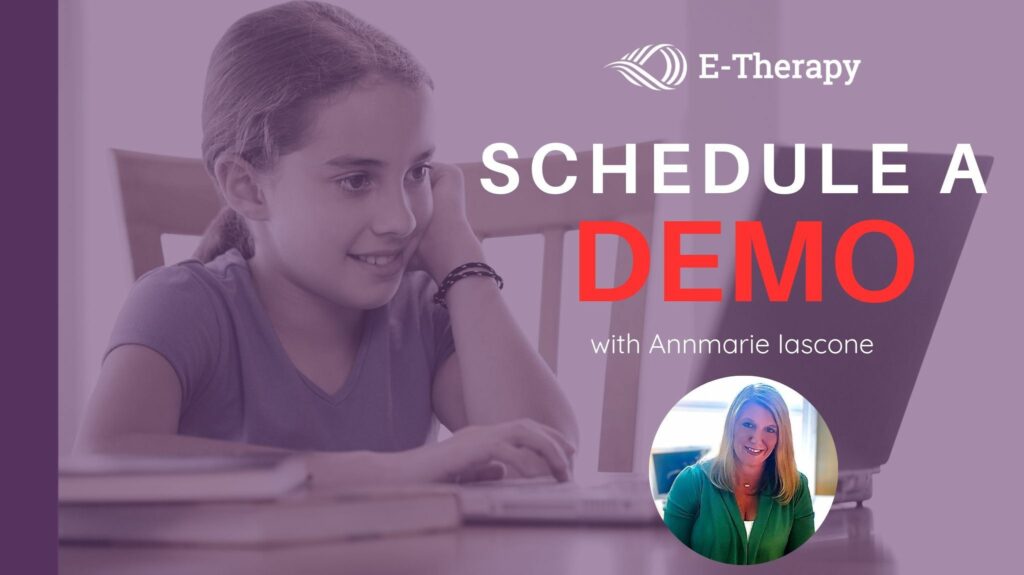 As we reach a point where all schools are closed and the uncertainty of when they will reopen lingers, educators have reluctantly adapted to a new way of teaching and learning. In the Special Education space, there is even more of a struggle with multiple teachers and therapists being involved. SLPs are in the thick of it!Speech Therapists – as well as occupational and physical therapists and counselors – are expected to deliver online therapy to their students via teletherapy; many without proper teletherapy platforms to use and without any formal training. The general lack of understanding about what teletherapy is, and a resistance to adoption due to some unfounded myths adds to fear of the unknown. But as you dive into online speech therapy you will see that there are not many differences to the in-person delivery model. And there are some wonderful benefits as well!
As we reach a point where all schools are closed and the uncertainty of when they will reopen lingers, educators have reluctantly adapted to a new way of teaching and learning. In the Special Education space, there is even more of a struggle with multiple teachers and therapists being involved. SLPs are in the thick of it!Speech Therapists – as well as occupational and physical therapists and counselors – are expected to deliver online therapy to their students via teletherapy; many without proper teletherapy platforms to use and without any formal training. The general lack of understanding about what teletherapy is, and a resistance to adoption due to some unfounded myths adds to fear of the unknown. But as you dive into online speech therapy you will see that there are not many differences to the in-person delivery model. And there are some wonderful benefits as well!
Here are three common myths with regards to teletherapy:
- Teletherapy is not as effective as on-site therapy
- Students are not as engaged as they are in-person
- I cannot hold a successful IEP meeting virtually
Myth #1: Teletherapy is not as effective as on-site therapy
Let’s start with the teletherapy myth which questions the effectiveness of online therapy versus on-site therapy.With COVID-19 school closures, online learning has been ‘forced’ upon school districts across the country. Once things get to the “new normal,” there are sure to be lots of studies on the effectiveness of teletherapy.The research that has already been done shows that teletherapy can truly be as effective as in-person therapy.A three-year study from 2009-2012 conducted by the Waldo County Hospital in Maine found that children who received speech therapy via telepractice outperformed the national benchmark for children with similar diagnostic and demographic backgrounds. Myth busted!
Myth #2: Students are not as engaged as they are in-person
The second teletherapy myth is that children will not be as engaged with online therapy without being in front of the therapist.The simple truth is that kids love technology!Most children are highly motivated and feel very comfortable in front of a computer. Children as young as two years old know how to manipulate phones and computers.Technology today allows you to move around. Do the same things you would do if the students were in front of you. An interactive computer activity can get your “hard-to-sit-still” kiddos engaged. If these “wiggly” children are still having trouble sitting still, take wiggle breaks! Stand up and shake it out!An added bonus: from the aforementioned study, researchers found that “these high interest tasks often continue well beyond the therapy sessions.”For older kids, the stigma of going to therapy is lessened and the comfort level is increased. These teens feel more comfortable talking to a computer screen.You can create a connection just as easily as in-person. Just be yourself and be confident.If you need help finding resources, look no further than our Online Therapy Resources Guide. E-Therapy’s teletherapists have used these activities and resources successfully, and so can you!Download a PDF version of our Online Resources Guide:
Myth #3: I cannot hold a successful IEP meeting virtually
Finally, we bust another teletherapy myth: can you have an effective and successful IEP meeting online? The answer is of course!All the same things that made your in-person IEP meetings successful will make your virtual meetings successful. You are going to invite the same team members, go over the same materials, and check off the same IEP checklists. The only thing that has changed is that you are more reliant on technology.To be more confident, there are a few things you can do ahead of time.
- Find a quiet place in your home with minimal distractions.
- Make sure you organize yourself and do the same things you would have done to prepare for your on-site meeting i.e., sending invitations, sending copies of the IEP and so on.
- Be sure the digital invitation now has the log-in information.
- If possible, log into the meeting at least 5-10 minutes ahead of time to make sure your technology is working properly.
- Once the meeting starts, do your welcome and introductions just as would have in person.
- Now, take a deep breath and have your meeting!
You’ve got this! The more you do it, the more confident you will feel. If you need more guidance on conducting a IEP meeting online, check out our Practical Guide: Your First Remote IEP Meeting.So, three teletherapy myths BUSTED! We encourage schools to seek help when learning about their options. The E-Therapy team can walk you through a demo of our HIPAA compliant teletherapy platform and give your district a free 7 day trial of our technology.
Schedule a demo of the STAR Platform
Give us a call at or schedule a demo of the STAR platform with Annmarie to get more information today. Be safe, be healthy and know that we are here with you during this crazy time.
Be safe, be healthy and know that we are here with you during this crazy time.
